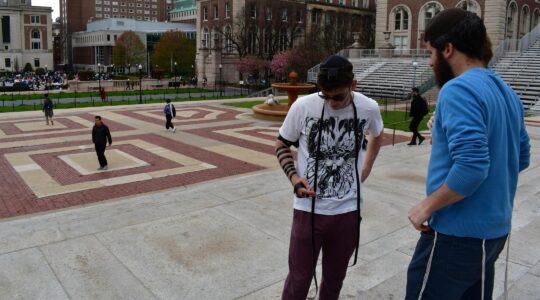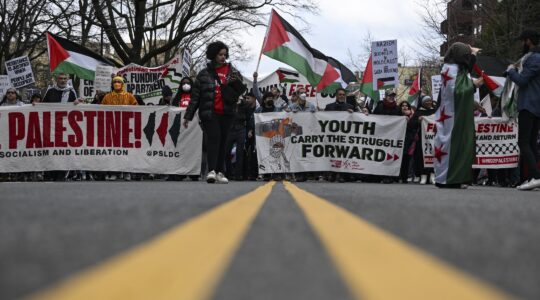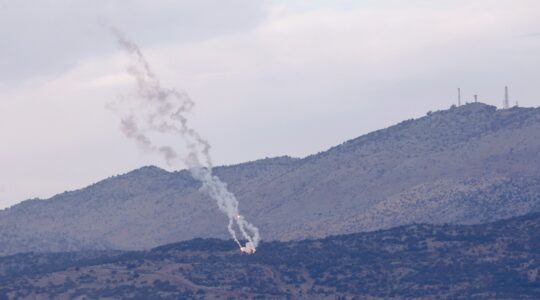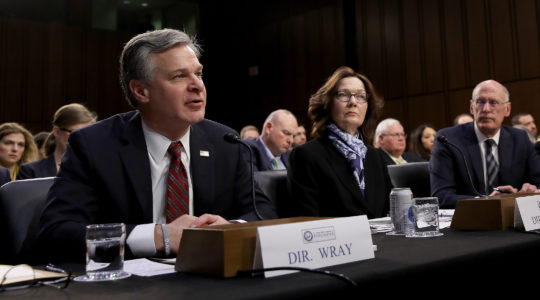Last Thursday, the Avi Chai Foundation released sociologist Jack Wertheimer’s long-awaited report on Jewish leaders in their 20s and 30s.
Wertheimer first announced some of the preliminary findings of his report, “Generation of Change: How Leaders in Their Twenties and Thirties are Reshaping American Jewish Life,” at this past spring’s Jewish Funders Network conference. As I reported back then, there weren’t a lot of surprises, but rather more confirmation about what many of us suspected.
Even though the findings aren’t all that shocking, they still leave a lot to chew on.
For the study, Wertheimer and five other well-known Jewish sociologists surveyed more than 3,000 Jews between the ages of 22 and 40 who identify as Jewish leaders and they conducted interviews with another 250. They defined "leaders" rather broadly to include anyone who runs a Jewish organization, has a Jewish project, is involved in Jewish organizations or is a Jewish thinker. They assume these people are likely to be in control of the organized Jewish community over the next several decades and to sculpt its future.
The study, which was conducted over two years, looks at the different views of these leaders based on the types of organizations with which they are involved. It divides them primarily into two categories: those involved in “establishment” organizations that deal with the more traditional agenda of the American Jewish community, such as Jewish federations, AIPAC and the Anti-Defamation League, and those involved in “non-establishment” organizations, such as Jewish start-ups, social service organizations and organizations built around recreation with some sort of Jewish connection.
The report found that leaders in both groups feel a strong sense of Jewish identity and belonging to the Jewish people, and many of them share similar Jewish backgrounds. Roughly 40 percent of individuals in both categories attended Jewish day schools. Seventy-one percent attended Jewish camps, 89 percent have two Jewish parents, and an astonishingly high percentage — around 45 percent — come from homes they described as Conservative. A low percentage come from Reform homes. About 55 percent of the leaders in both groups have spent time in Israel.
This is proof that whatever Jewish identity-building mechanisms the community has invested in are working, Wertheimer told me on Thursday.
If there is one similarity between young leaders of the establishment organizations and young leaders of the start-up world, it is that they both feel a strong sense of Jewish identity and belonging to the Jewish people. But it is in the intensity of that sense of belonging and connection to the Jewish community where the differences emerge.
According to the survey, 73 percent of the young leaders in non-establishment organizations have a strong sense of belonging to the Jewish people, while 75 percent in the establishment organizations feel the same. On the other hand, 64 percent of the non-establishment set say they feel part of the Jewish community, as compared to 73 percent of the young leaders in establishment organizations.
The viewpoints really start to diverge when it comes to the issues of Israel, anti-Semitism, intermarriage and the value of social service. Those involved in establishment organizations feel more strongly about Israel being central to their Jewish identities (51 percent of the establishment set vs. 32 percent of the non-establishment set), more emotionally attached to Israel (62 percent vs. 55 percent), more concerned about threats to Israel’s security (43 percent vs. 23 percent) and more worried about intermarriage (35 percent vs. 17 percent).
Fundermentalist’s take: This report really has a lot to digest. Some within Avi Chai feel that a book could come out of the full findings. I’ll pick out a few points.
1) Perhaps not purposely, the survey points to something of a class distinction within the young, plugged-in Jewish world.
The more upwardly mobile seem to affiliate with the traditional, establishment Zionist and Jewish organizations — what Wertheimer calls protective organizations – while young leaders involved in non-establishment, progressive start-ups seem to belong more to the traditional middle class.
“What we found is that people who are in law, for example, or real estate or out in Hollywood in parts of the entertainment industry are interested in the networking that Jewish organizations offer,” Wertheimer told me. “So they are more attracted to the networking opportunities that the establishment provides — particularly the federations and parts of the American Jewish Committee and the ADL. Whereas the non-establishment [leaders] tend to earn less and tend to be in not-for-profit work or in the helping professions.”
Some 39 percent of those under 40 are involved in some mix of establishment and start-up organizations, while only 27 percent were involved exclusively in establishment groups.
In my own experience, I’ve found that young leadership events are usually organized around the principle of cultivating a new donor base. The organizations build an affinity for the cause by bringing young professional Jews — read six-figure earners and above — to social events where they can meet like-minded peers and potential mates. That is the classic Jewish federation model. Conversely, non-establishment events tend to be about building identity in one form or another.
That doesn’t mean that the old school is for the rich and the Jewish start-up world is only for the middle class. While the non-establishment world is run largely by those outside the top-earning segment of the under-40 set, it is largely funded by the Baby Boomer set and beyond, according to the report.
The study also debunks the notion that the establishment organizations have no need for the start-up organizations. It asserts, rather, that the leaders of start-up organizations initially became involved in the Jewish world through establishment organizations and that, once they “break away” to create start-ups, they continue to be supported by established organizations and foundations.
2) There seems to be a sentiment among progressive skeptics that established organizations such as the ADL and AIPAC are building a conservative, upwardly mobile class that fears for Israel’s security and worries about Cossacks lurking around every corner. The numbers here do not seem to bear that out.
Regarding questions about Israel’s security, fears of anti-Semitism and the importance of Holocaust remembrance, there is a difference between the establishment and start-up groups, to be sure. However, even young leaders from establishment organizations are far less fearful than the older generation of establishment leaders.
According to the study, 23 percent of young people and 39 percent of older people in the non-establishment world are concerned about threats to Israel’s security, compared to 43 percent of establishment young people and 59 percent of older establishment leaders. At the same time, 9 percent of young people and 14 percent of older people in the start-up cohort are worried about anti-Semitism in the United States, compared to 19 percent of both younger and older leaders in the establishment group. On the question of the importance of remembering the Holocaust, 23 percent of young people and 36 percent of older people in the start-up cohort believe it is essential, compared to 39 percent of young establishment leaders and 45 percent of older establishment types.
It is interesting to note that while conventional wisdom loves to forecast that the Conservative movement will one day implode, so much of the current young leadership — more than 40 percent — actually come from Conservative backgrounds. “At a time when the Conservative movement is contracting, we see just how successful it was in producing a disproportionate number of people who get involved,” Wertheimer said. “I don’t think we should take that for granted.”
A final thought: Wertheimer is looking at the findings of this study as validation for the hundreds of millions of dollars philanthropists have poured into Jewish day schools, identity-building programs and Jewish leadership training programs.
“I don’t take for granted just how powerful the investments in Jewish education have been,” he said. These people “come from similar backgrounds, have been exposed disproportionately to day schools and even more so to summer camps and equally to time spent in Israel and working in Israel. These are all the products of the investment made in the continuity push in the 1990s, and these young people are the products of that.”
It is true that a large percentage of those who consider themselves leaders have come through the system. But it is also important to note that there is no control set here. We know that the leaders have been positively affected by the system. But what percentage of the total number of young Jews who have come through the system go on to become leaders?
That, Wertheimer said, “is beyond what we studied.”





